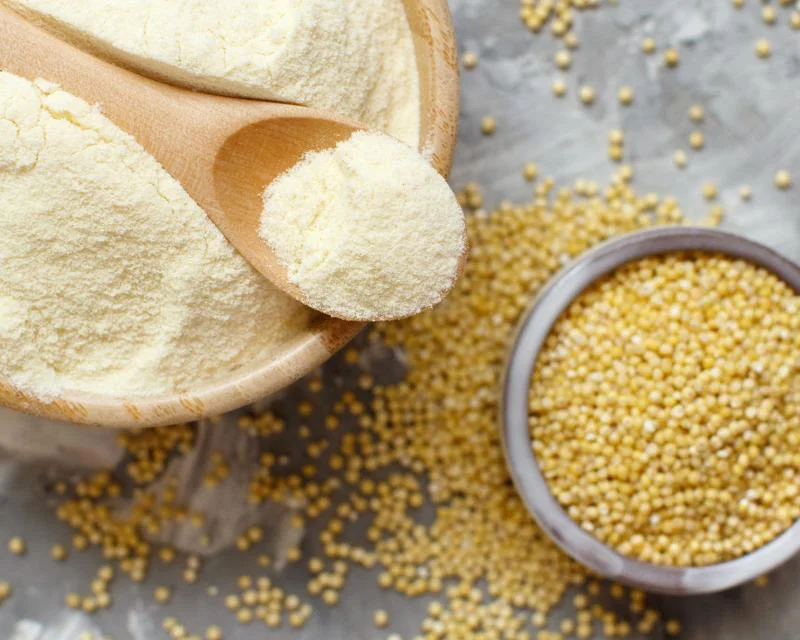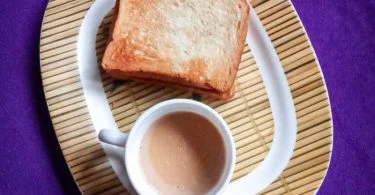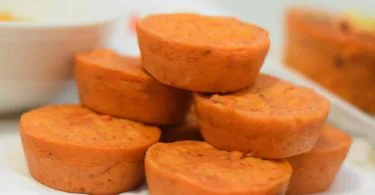Flour is a crucial ingredient in baking. However, the most popular flour used is white or wheat flour, which both contain gluten, and this makes it problematic for people sensitive to gluten, people with celiac disease, or those looking to exclude flour from their diet.
There are a variety of other substitutes for flour that one can use to bake for people looking to exclude gluten from their diet.
Here’s a list of 10 gluten-free flour substitutes.
1. Almond Flour
Almond flour is a popular alternative to regular wheat flour. It is both gluten- and wheat-free and is used to prepare things like cookies, quick bread, and cakes.
It has a high fat content, which helps keep your baked goodies soft and moist. You may need more eggs to bake this flour since it doesn’t bind as quickly as regular flour.
Packaged almond flour is available in stores, but alternatively, you can make your almond flour. It is much safer since certain products might still contain gluten.
To make your almond floor, you need almond seeds. Peel the skin off, boil water, and grind and sift the chaff to get your smooth almond flour.
2. Buckwheat Flour
Buckwheat flour is another excellent alternative to use. It is suitable for making yeast bread, pancakes, and crepes. Despite its name, it is also gluten-free.
Buckwheat flour tends to fall apart quickly, so it’s often combined with other types of gluten-free flour when baking.
It is an excellent choice of flour because it contains carbs, proteins, vitamins and minerals, and even antioxidants which are very helpful in the body.
If you’re looking to reduce your gluten intake and not eliminate it, replace a bit of your regular flour with buckwheat flour and not all of it.
Baking solely with buckwheat flour is bound to produce a disastrous taste, except if you’re making pancakes, waffles, or eggs since these use generous amounts of egg that’ll hold your dough together.
It’s essential to also be on the lookout for labels confirming your buckwheat flour is 100% gluten-free since cross-contamination is possible during processing.
3. Millet Flour
Millet flour is made from ground millet. It is mild, nutty, and slightly sweet, making it an excellent option for desserts and bread.
Although the plant looks like wheat, millet is wholly gluten-free and is a good source of proteins, vitamins, and minerals.
Like other gluten-free flours, it doesn’t completely replace regular flour without being combined with different flour types, and this is to avoid an overly crumbly baked product. It is sometimes used with xanthan gum, a wheat-free binding product that keeps your dough elastic.
Anyone can easily make millet flour at home by blending hulled millets in a high-speed blender and sieving.
4. Chickpea Flour
Chickpea flour is an excellent substitute if you’re thinking of gluten-free flour. It’s also known as gram flour and is made from garbanzo beans.
This flour substitute is a nutritious option since it’s low in carbs and calories and high in proteins. It also contains good fiber content, making it all the more useful for baking or frying.
It is made by grinding and sifting garbanzo beans (chickpeas), and you can use it in making pancakes, pizza, sandwich bread, and even muffins.
5. Brown Rice Flour
It’s made from hulled rice. Asides from being a good substitute for wheat flour, its high fiber content makes it a good choice for gluten-free flour. It is also rich in vitamins and minerals.
Brown rice flour tends to spoil relatively quickly, so it must be purchased in small quantities or stored in airtight containers and refrigerated for later use.
It’s typically combined with sorghum flour, potato starch, and xanthan gum when baking.
6. Tapioca Flour
Although this gluten-free flour isn’t packed with nutrients, it has low sugar and fat content, which is a plus for those looking for a low-calorie substitute.
It is made from the starchy pulp of cassava root, which is different from using the entire root to make cassava flour. You can use it in cookie dough, cupcakes, and homemade pudding, and it has a crispy, chewy texture.
It has a good texture which is essential for baking.
7. Cassava Flour
Cassava flour is another good alternative. The cassava used to make this is soaked, grated, and dried.
It has a very high carbohydrate content and is an excellent alternative to wheat flour. You can use it in baking bread, brownies, cookies, muffins, and cakes.
When it’s used for baking, less quantity of flour is used since it tends to absorb liquids better than regular wheat flour. It’s also a good option for making flatbreads.
8. Arrowroot Flour
Arrowroot flour is an excellent gluten-free substitute for making bread, cakes, and dessert recipes.
It is made from arrowroot tubers, and its resistant starch content makes it a perfect choice for baking.
It has the highest protein content compared to other tubers, and the flour is best when mixed with additional gluten-free flour like almond flour.
9. Quinoa Flour
Quinoa flour is another good option, although less common. It also has a mild flavor though it’s rich in various nutrients.
You can use it for baking gluten-free bread, pancakes, pies, and muffins. People allergic to cooked quinoa would be better off avoiding using the flour too.
Its high protein content makes it a good choice for gluten-free flour. It tends to taste slightly bitter, so it’s advisable to toast it before baking.
10. Coconut Flour
Coconut flour is made from grated coconuts that have been dried. To dry the grated coconuts, the chaff is baked before being ground into flour.
Coconut flour is known to have a mild flavor, but its excellent nutrient profile makes it a good option for gluten-free flour.
One can use it in baking bread, cakes, and cookies.
Although all gluten-free flour has unique qualities, combining one or two when completely replacing wheat flour is best.
Aside from their use for baking, most of them can also be used as thickeners in soups and gravies and for cooking meals that require flour.
The best way to know which gluten-free option works best for you is to try these different flours.







